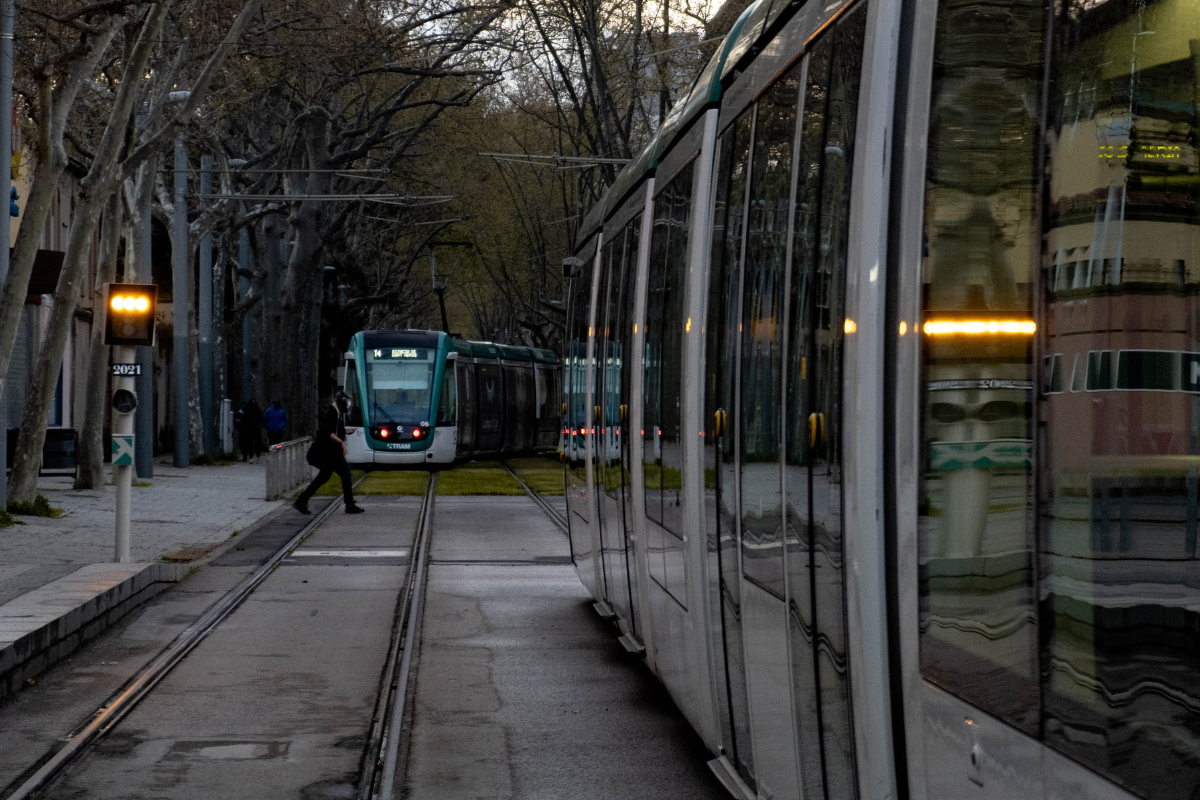Keeping Barcelona on the move


Meritxell Salas
Engineer at the Strategic & Prospective Planning Area at FGC

Albert Solé
Business Sales Development Officer at EIT Urban Mobility
There are some issues that affect us all on a daily basis, and mobility is undoubtedly one of them. We need to move for almost all aspects of our lives (work, study, leisure, etc.), so effective mobility determines the quality of our lives and the appeal of the areas in which we live. In fact, in the Draft Sustainable Mobility Bill, currently undergoing parliamentary scrutiny, mobility is recognized as no less than a “social right.” So how do people get around Barcelona and the surrounding area?
Barcelona, European capital of mobility
Mobility plays a key role in the Greater Barcelona area for the economy and for all those who live here. The city has a network of major infrastructures and initiatives that make it a benchmark for mobility at the international level. The Port of Barcelona, for example, ranks twenty-fifth among the best-connected ports in the world and is among the top ten ports in Europe in terms of container traffic. The airport also ranks among the top ten European airports in terms of passenger traffic. And, albeit controversial in some quarters, initiatives such as the new pedestrian “superblocks” in the city center have received international recognition, with calls for them to be rolled out elsewhere.
Barcelona is also widely considered to be the European capital of urban mobility, and is in fact the venue for leading events in this field. These include the Smart City World Congress / Tomorrow.Mobility, and, this year, the Global Public Transport Summit, the most important public transport congress in the world. The city is also the headquarters of the European Institute of Innovation and Technology (EIT) Urban Mobility and has been selected to play a role in a European Commission mission that aims to create 100 smart and climate-neutral cities by 2030, a goal in which mobility will undoubtedly play a key role.
These infrastructures and initiatives are generally well recognized by industry specialists, but what about day-to-day mobility in and around Barcelona?
Mobility in the Barcelona area needs to be understood on three levels: municipal, metropolitan, and regional, each with its own features and all equally important when planning an urban mobility strategy.
Municipal mobility: pedestrian and public transport
At the municipal level, Barcelona is actively working to promote more sustainable mobility and more space for pedestrians, with pioneering initiatives such as pedestrian “superblocks,” a Low Emission Zone, and the extension of the bike lane network. The city was ranked by the RACC’s Sustainable Urban Mobility Index as the best city in Spain in terms of mobility in 2019, and, while some initiatives may prove controversial, significant progress continues to be made.
According to the recently approved Urban Mobility Plan (PMU) 2024, the majority of journeys in the city are made either by public transport or on foot. Nevertheless, the city has set a goal of reducing private vehicle use 25% by 2024, as private vehicles produce by far the most side effects—more space needed, higher fuel consumption, higher accident rates, pollution, congestion, noise, etc.).
Mobility in Barcelona is about much more than just the city itself
According to the latest mobility surveys, however, more than half of the journeys made in private vehicles within Barcelona are journeys that start or finish outside the city limits, and private vehicles continue to be the main means of entering Barcelona for residents in the rest of the territory. The challenge is therefore to balance the needs of those who live in Barcelona with those of the people who come into the city on a daily basis.
So, as is typical for all large cities, planning must include more than just the city itself.
Metropolitan mobility and the need for administrations to work together
Although there is already good public transport coverage in the Greater Barcelona metropolitan area, and there is a willingness to continue improving services and infrastructure, the challenge is to encourage greater use of services. And this means that there needs to be good coordination amongst the relevant administrations. Fragmented responsibilities for mobility often lead to inefficiencies in services provided and in delays in necessary and urgent projects. It is worth highlighting the efforts in founding the Metropolitan Transport Authority (ATM), which made it possible to create an integrated fare system and, more recently, to roll out the T-Mobilitat payment system. However, a greater level of consensus is required to achieve sustainable mobility throughout the metropolitan area.
Reliable and intermodal regional mobility
At the regional level, where public transport is by nature more limited, the main challenge is to offer convenient and reliable services, with regular routes that are punctual, attractive to users, and have good information systems. There has been a return to long-promised railway investment in the territory with the 2020-2030 Plan de Cercanías, which is being implemented more rapidly than previous plans. In addition, new intermodal mobility solutions could do much to create opportunities in this area. Initiatives like park&rides and on-demand bus services, for example, could make public transport more accessible for regional users who may have been excluded from a system that often struggles to compete with private vehicles.
Consensus and the political will to implement planned infrastructures and services
Although some public transport routes cannot compete with private vehicles, we have to do what we can to work efficiently and collaboratively to promote sustainable mobility, both in the city and throughout the region. To this end, mobility infrastructures and services need to be planned jointly at all levels, an area in which we already have an excellent track record, including the Pla Director d’Infraestructures, Pla de Mobilitat Urbana de Barcelona, Pla Metropolità de Mobilitat Urbana, Pla Infraestructures del Transport de Catalunya, etc. But planning must be backed up with rapid execution and efficient operation, aspects that unfortunately are not always realized.
Para ello resulta imprescindible una correcta planificación de las infraestructuras y servicios de movilidad a todos los niveles y de forma conjunta, algo en lo que existe una sólida experiencia (eg. Pla Director d’Infraestructures, Pla de Mobilitat Urbana de Barcelona, Pla Metropolità de Mobilitat Urbana, Pla Infraestructures del Transport de Catalunya, etc), pero que debe ir acompañada también de su ejecución y de su explotación, aspectos que infelizmente no siempre se materializan.
The political will to reach agreements is essential for prioritizing and building the necessary infrastructures and for taking advantage of opportunities like the introduction of new technologies. To meet the challenges facing the city, we need to move towards intermodal, fast, easy, comfortable, safe, sustainable, healthy, equitable and smart mobility, and so increase Barcelona’s appeal and the quality of life of all those who live here and in the entire region.
If you want to know the latest English news about Barcelona and the people who bring it to life, sign up to our Blog.







